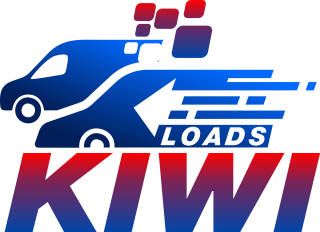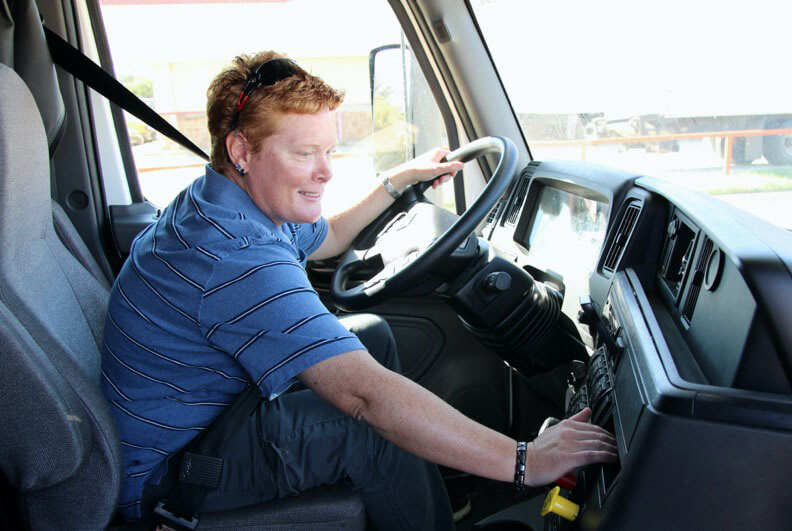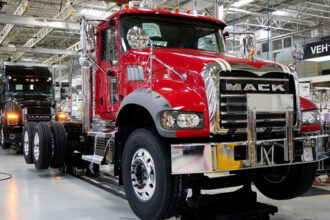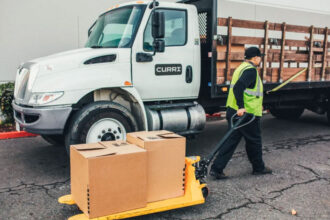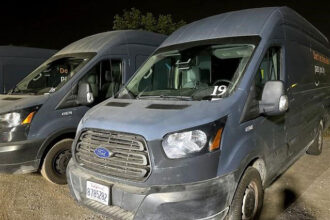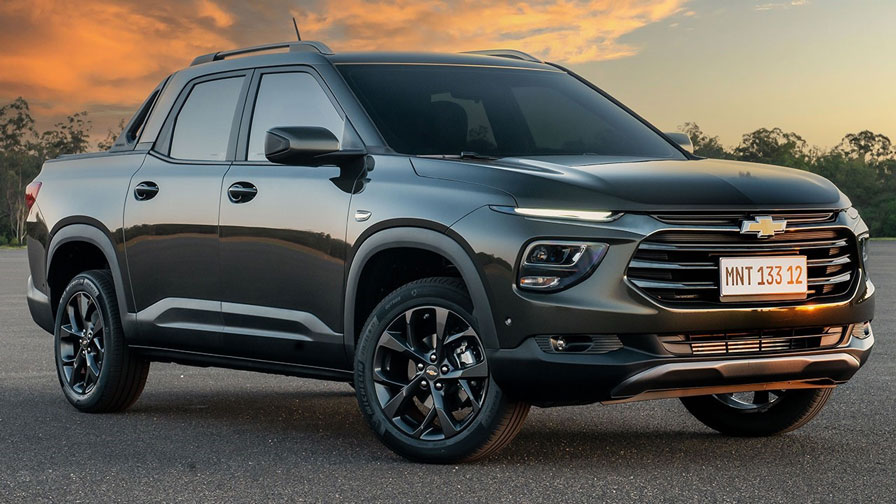Table of Contents
You’re passionate about trucking and you want to help others achieve their dream of becoming commercial drivers. So you decide to start your own CDL school. But where do you begin?
Starting your own CDL school presents a unique opportunity. The trucking industry’s high demand for skilled commercial drivers offers the potential for lucrative income and partnerships with trucking companies for job placement. Simultaneously, it allows you to fulfill dreams by helping individuals become professional truck drivers and provide essential services to the ever-expanding trucking industry.
On the flip side, launching your CDL school requires not only a considerable financial commitment but also a dedicated investment of your time and energy. Your initial financial outlay encompasses acquiring equipment, securing appropriate facilities, and hiring qualified instructors. You must diligently navigate the intricate state and federal regulations to ensure your school’s success.
Furthermore, you operate in a highly competitive CDL education sector, demanding innovative strategies to position your school as the top choice for aspiring truck drivers.
Starting a CDL school is like navigating a winding highway with both breathtaking vistas and challenging terrain. Now that you know the lay of the land, you’re better prepared to take the wheel. So, fasten your seatbelt and get ready for the journey of a lifetime!
CDL School How to Start One
- Start with Research
- Develop a Business Plan
- Obtain the Necessary Licenses and Permits
- Hire Qualified Instructors
- Obtain Trucks and Equipment
- Develop Curriculum
- Find the right location
- Get the Right Facilities and Equipment
- Insurance and Liability
- Compliance with Regulations
- Marketing and Advertising
Recap
1. Start with Research
To start your CDL school, it’s crucial to do your homework. Begin by immersing yourself in the truck driving industry within your area. Dive deep into understanding the local landscape.
Your first and foremost inquiry should be about the demand for truck drivers. Is there a palpable need for skilled commercial drivers in your vicinity? This is a pivotal question because the success of your school hinges on catering to a genuine demand. You wouldn’t want to set up your school where the need is merely a mirage; instead, you should launch your CDL school precisely where the need is tangible and unmistakable.
Think of this initial research phase as the compass that guides your entire journey. Understanding the demand in your area not only helps you strategically position your school but also ensures a steady stream of eager students ready to hit the road.
>>>MORE: How to Get a CDL for Free
2. Develop a Business Plan
To begin your CDL school, you build the foundation of your success upon a robust business plan. Think of this plan as your guiding compass, illuminating the path ahead.
In your business plan, outline three essential strategies. First, detail your marketing plan to attract students and establish your school as the preferred choice. Second, focus on revenue generation, setting prices, and tuition fees. Finally, lay out your financial strategy, including budgets and financial projections.
Your business plan serves as the blueprint for your school’s future, helping you navigate challenges and seize opportunities along the way, ensuring a successful journey.
3. Obtain the Necessary Licenses and Permits
To get your CDL school up and running, you need to tackle the paperwork. Licensing and permits vary by location, so be sure to reach out to your local government to find out exactly what’s required in your area.
4. Hire Qualified Instructors
To begin your CDL school, you need to recruit skilled instructors. Your instructors are the backbone of your school. When seeking instructors, prioritize qualifications, experience, and a genuine passion for teaching.
They should hold the necessary certifications, demonstrating their expertise in the world of commercial driving. Their experience on the road and in the industry is invaluable in imparting real-world knowledge to your students.
More than just instructors, they serve as mentors, guiding and inspiring the next generation of truck drivers. Their passion for teaching not only makes the learning experience engaging but also helps students develop a deep appreciation for safe and effective driving practices.
5. Obtain Trucks and Equipment
To commence your CDL school, you must acquire trucks and essential equipment. Your students need something to practice on, right? Providing your students with trucks for practice and the necessary equipment, like simulators and training vehicles, is a fundamental aspect of your school’s success.
However, it’s important to acknowledge that this can be a significant financial commitment. So, it’s wise to budget meticulously and explore leasing options to manage costs effectively.
These vehicles and equipment not only serve as the foundation for hands-on learning but also contribute to the safety and quality of your training program. They represent a tangible investment in your school’s reputation and the skill development of your future truck drivers.
6. Develop Curriculum
To establish your CDL school, you should create a curriculum. A well-structured curriculum should be like a well-balanced meal, covering all the necessary components. It should encompass the fundamental aspects of driving, including basic driving skills and safety regulations.
However, it should also delve into more advanced topics, such as logistics and navigation, to ensure your students are well-prepared for the complexities of the trucking industry.
Think of your curriculum as the treasure map you provide to your students, guiding them through the vast terrain of commercial driving knowledge. By carefully designing and continually improving this educational pathway, you equip your students with the skills and knowledge they need to thrive in their trucking careers.
7. Find the right location
To kickstart your CDL school, you need to identify the ideal location. You want a place with ample space for truck parking and training sessions. Don’t forget to consider how easy it is for potential students to reach you, accessibility, and zoning rules.
>>>PRO TIPS: CDL Training Alley Dock Maneuver: What to Know
8. Get the Right Facilities and Equipment
To initiate your CDL school, ensure you acquire suitable facilities and necessary equipment. Apart from the trucks, you need a classroom for theory lessons. Think comfortable seating, audiovisual gear, and teaching materials. Plus, invest in simulators, practice vehicles, and any other equipment necessary for practical training.
9. Insurance and Liability
To launch your CDL school, make sure you have appropriate insurance coverage to safeguard your school, instructors, and students. Among the various types of insurance, liability insurance is of utmost importance. It acts as a protective shield in case of accidents or property damage that may occur during training sessions.
Accidents can happen, and having proper liability insurance in place ensures that your CDL school is well-prepared to handle such unforeseen situations without compromising the financial stability of your institution.
Consider insurance as a safety net, providing peace of mind to both you and those involved in your school. It’s an essential component of risk management, helping you navigate potential challenges while maintaining a secure and responsible learning environment for your students.
10. Compliance with Regulations
To establish your CDL school, immerse yourself in the world of regulations. Get to know the local, state, and federal rules that govern CDL schools. This includes instructor certifications, minimum training hours, and safety standards.
11. Marketing and Advertising
To initiate your CDL school, you should focus on marketing and advertising. Your school needs students, and that means marketing. In today’s digital age, embracing online strategies is imperative.
Invest in creating an enticing website that provides a clear picture of what your school offers and why it’s the best choice. A strong online presence not only builds credibility but also makes it easy for interested individuals to find and contact your school.
Social media is another powerful tool in your marketing arsenal. Establish a robust social media presence to engage with your audience, share valuable content, and keep prospective students informed about your offerings.
Additionally, consider partnerships with local trucking companies or job placement agencies. These collaborations can broaden your reach, connecting you with potential students who are actively seeking opportunities in the trucking industry.
Marketing and advertising are not just about promoting your school; they’re about creating awareness, generating interest, and ultimately filling your classrooms with eager learners. A well-executed marketing strategy can be the key to the success and growth of your CDL school.
Recap
Starting your own CDL school involves a mix of opportunities and challenges. You tap into the demand for skilled truck drivers, but it comes with a significant commitment of time and resources.
To navigate this journey, you should start with research, create a solid business plan, secure the necessary permits, hire qualified instructors, and obtain the essential trucks and equipment.
Developing a comprehensive curriculum, finding the right location, ensuring the right facilities, and having appropriate insurance and compliance with regulations are vital for your school’s success. Effective marketing and advertising strategies are also key to attract and retain students.
